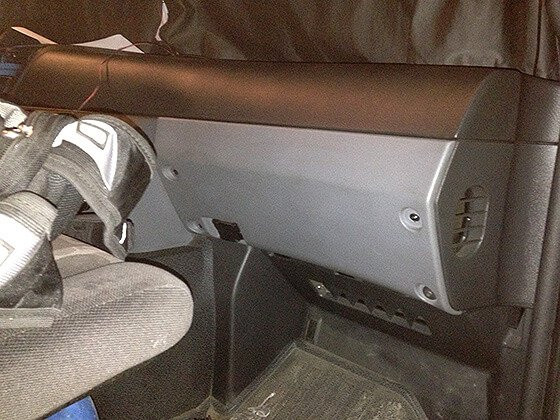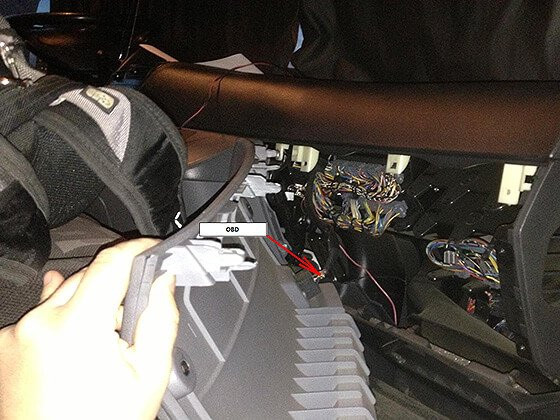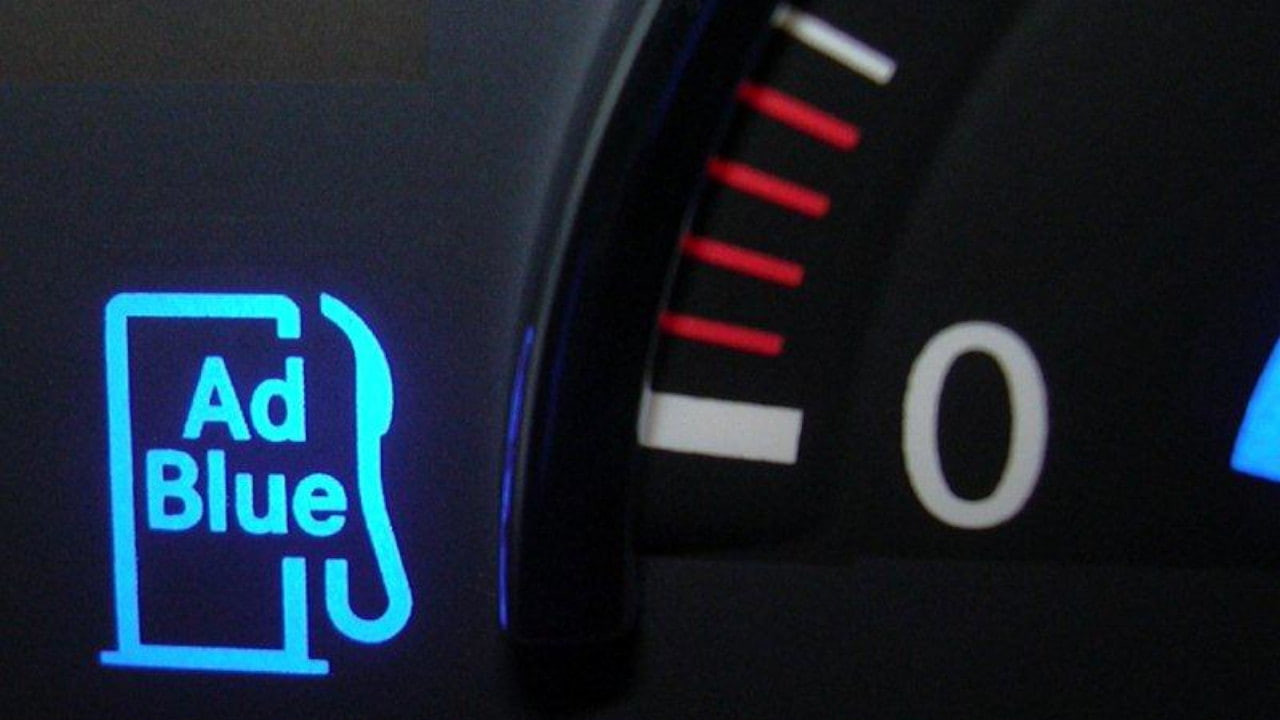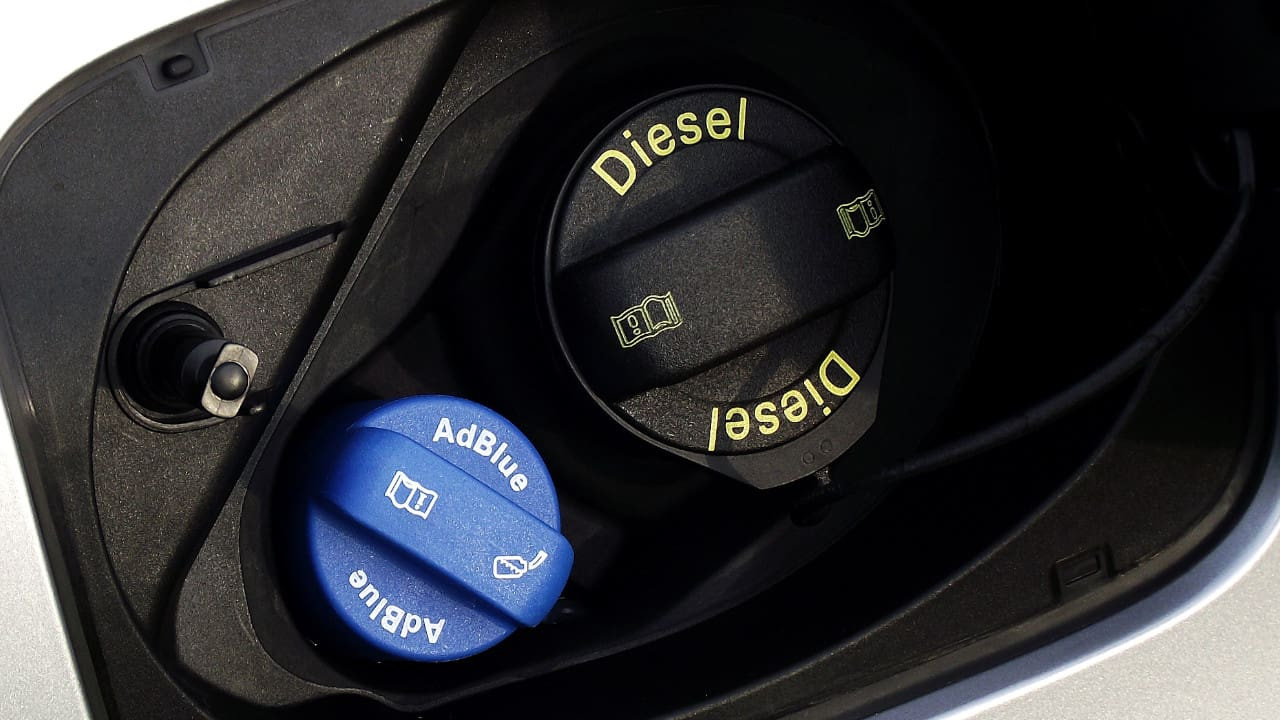1. Understanding the Mercedes Adblue System
The AdBlue system, also known as Selective Catalytic Reduction (SCR), is designed to reduce harmful nitrogen oxides (NOx) emissions from diesel engines. Understanding how it works is crucial before considering alternatives like the Mercedes Adblue emulator...
1. Understanding the Mercedes Adblue System
The AdBlue system, also known as Selective Catalytic Reduction (SCR), is designed to reduce harmful nitrogen oxides (NOx) emissions from diesel engines. Understanding how it works is crucial before considering alternatives like the Mercedes Adblue emulator.
1.1. How the AdBlue System Works
The AdBlue system injects a urea-based solution (AdBlue) into the exhaust stream. This solution reacts with the NOx in the catalytic converter, converting it into harmless nitrogen and water. This process helps diesel vehicles meet stringent emission standards, particularly the Euro 6 standards.
1.2. Components of the AdBlue System
Key components include:
- AdBlue Tank: Stores the AdBlue solution.
- AdBlue Injector: Sprays AdBlue into the exhaust stream.
- SCR Catalytic Converter: Facilitates the chemical reaction to reduce NOx.
- NOx Sensors: Monitors NOx levels and provides feedback to the engine control unit (ECU).
- ECU: Controls the entire AdBlue system, adjusting AdBlue injection based on sensor data.
1.3. Common Issues with the AdBlue System
Several issues can arise with the AdBlue system:
- Crystallization: AdBlue can crystallize, blocking injectors and lines.
- Sensor Failure: NOx sensors are prone to failure, leading to incorrect readings.
- Pump Failure: The AdBlue pump can fail, preventing AdBlue injection.
- ECU Problems: Software or hardware issues in the ECU can disrupt the system.
These problems can lead to warning lights, reduced engine performance, and even complete engine shutdown, making the Mercedes Adblue emulator a viable solution.
2. What is a Mercedes Adblue Emulator?
A Mercedes Adblue emulator is an electronic device designed to bypass the AdBlue system in Mercedes-Benz trucks. It simulates the signals from a fully functional AdBlue system, allowing the vehicle to operate without the need for AdBlue.
2.1. How the Emulator Works
The emulator intercepts and modifies the signals from the NOx sensors, AdBlue pump, and other components. It sends pre-programmed signals to the ECU, indicating that the AdBlue system is functioning correctly, even if it is not.
2.2. Benefits of Using an Emulator
- Cost Savings: Eliminates the need for expensive AdBlue refills and repairs.
- Reduced Downtime: Avoids downtime caused by AdBlue system malfunctions.
- Simplified Maintenance: Reduces the complexity of vehicle maintenance.
- Performance: Maintains engine performance by preventing AdBlue-related restrictions.
2.3. Potential Drawbacks
- Legality: Use may be restricted or illegal in certain regions due to emissions regulations.
- Environmental Impact: Bypassing the AdBlue system increases NOx emissions, contributing to air pollution.
- Warranty Issues: Using an emulator may void the vehicle’s warranty.
It is essential to consider these factors and local regulations before deciding to use a Mercedes Adblue emulator.
3. Why Choose a Mercedes Adblue Emulator?
Choosing a Mercedes Adblue emulator can be a strategic decision for fleet managers and truck owners facing persistent issues with their AdBlue systems. Here’s a detailed look at why an emulator might be the right choice.
3.1. Cost-Effectiveness
The primary appeal of an Adblue emulator lies in its ability to save money. AdBlue fluid isn’t cheap, and the costs add up quickly, especially for vehicles that clock significant mileage.
- Reducing Fluid Costs: An emulator eliminates the need to refill the AdBlue tank, translating to substantial savings over time.
- Avoiding Repair Costs: AdBlue systems are complex and can be expensive to repair. Components like NOx sensors, pumps, and injectors are prone to failure and costly to replace. An emulator bypasses these components, preventing these expenses.
- Long-Term Savings: In the long run, the initial investment in an emulator pays off by avoiding recurring costs associated with the AdBlue system.
3.2. Reliability
AdBlue systems are known for their sensitivity and susceptibility to failure. Using an emulator can provide a more reliable solution.
- Bypassing Fault-Prone Components: Emulators circumvent the components most likely to fail, such as sensors and pumps, enhancing the vehicle’s reliability.
- Reducing Downtime: Frequent AdBlue system issues can lead to significant downtime for vehicles. By eliminating these problems, emulators help keep trucks on the road and reduce disruptions to operations.
- Consistent Performance: Emulators ensure consistent engine performance by preventing AdBlue-related restrictions that can occur when the system detects a fault.
3.3. Ease of Installation
Modern Adblue emulators are designed for straightforward installation, making them accessible to both professional mechanics and experienced vehicle owners.
- Plug-and-Play Devices: Many emulators are designed as plug-and-play devices, meaning they can be quickly installed without extensive modifications to the vehicle’s wiring.
- Simple Wiring: Emulators typically require connecting a few wires to the vehicle’s CAN bus and power supply, a task that can be completed with basic tools and knowledge.
- Clear Instructions: Reputable emulator providers, like CARDIAGTECH.NET, offer comprehensive installation manuals and support to guide users through the process.
3.4. Avoiding Complex Repairs
Dealing with AdBlue system repairs can be a headache, involving specialized tools, diagnostic equipment, and expertise. Emulators offer a way to sidestep these challenges.
- Reducing Diagnostic Work: AdBlue system faults often require extensive diagnostic work to identify the root cause. Emulators eliminate the need for this troubleshooting.
- Simplifying Maintenance: By bypassing the AdBlue system, emulators reduce the complexity of vehicle maintenance, making it easier for mechanics to keep the vehicle running smoothly.
- Eliminating the Need for Specialized Parts: Sourcing replacement parts for AdBlue systems can be difficult and time-consuming. Emulators remove the need to find and install these specialized components.
3.5. Improved Vehicle Uptime
For commercial vehicles, uptime is critical. Every hour spent in the repair shop translates to lost revenue.
- Minimizing Disruptions: Emulators help minimize disruptions by preventing AdBlue system faults from sidelining vehicles.
- Keeping Vehicles on the Road: By enhancing reliability and reducing the need for repairs, emulators ensure vehicles spend more time on the road, generating revenue.
- Enhancing Productivity: With more reliable vehicles, fleet managers can optimize their operations and improve overall productivity.
3.6. Compatibility
A wide range of Mercedes-Benz truck models and engine types can use Adblue emulators.
- Broad Compatibility: High-quality emulators are designed to work with various Mercedes-Benz truck models, covering a wide range of engine types and model years.
- Model-Specific Solutions: Some providers offer model-specific emulators, ensuring optimal performance and compatibility with the vehicle’s electronics.
- Adaptability: Advanced emulators can adapt to different vehicle configurations and driving conditions, ensuring consistent performance in diverse environments.
Choosing a Mercedes Adblue emulator can be a practical solution for truck owners and fleet managers seeking to reduce costs, improve reliability, and minimize downtime. However, it’s essential to consider the legal and environmental implications before making a decision. CARDIAGTECH.NET offers a range of high-quality emulators designed to meet the specific needs of Mercedes-Benz trucks, ensuring you get the best possible performance and value.
4. Types of Mercedes Adblue Emulators
When choosing a Mercedes Adblue emulator, it’s important to understand the different types available to ensure you select the one that best fits your needs.
4.1. EURO 4/5 Emulators
These emulators are designed for older Mercedes-Benz trucks that comply with EURO 4 or EURO 5 emission standards. They are generally simpler in design and more affordable.
- Features:
- Bypass the AdBlue system.
- Simulate NOx sensor signals.
- Work with older ECU versions.
- Compatibility:
- Mercedes-Benz trucks meeting EURO 4 and EURO 5 standards.
- Commonly used in older Actros, Axor, and Atego models.
4.2. EURO 6 Emulators
EURO 6 emulators are designed for newer Mercedes-Benz trucks that meet the EURO 6 emission standards, which are more stringent. These emulators are more complex and require advanced programming.
- Features:
- Advanced signal simulation.
- Compatibility with newer ECU versions.
- May include additional features like engine protection.
- Compatibility:
- Mercedes-Benz trucks meeting EURO 6 standards.
- Typically used in newer Actros, Arocs, and Antos models.
4.3. Universal Emulators
Universal emulators are designed to work with a wide range of Mercedes-Benz truck models and emission standards. They offer flexibility but may require more configuration during installation.
- Features:
- Broad compatibility.
- Configurable settings.
- May require programming tools.
- Compatibility:
- Various Mercedes-Benz truck models.
- Suitable for mixed fleets with different emission standards.
4.4. Specific Model Emulators
Some emulators are designed for specific Mercedes-Benz truck models to ensure optimal performance and compatibility.
- Features:
- Tailored to specific ECU settings.
- Easy installation.
- Optimized performance.
- Compatibility:
- Specific Mercedes-Benz truck models (e.g., Actros MP4, Actros MP5).
- Ideal for fleets with uniform vehicle models.
4.5. NOx Sensor Emulators
These emulators focus specifically on bypassing the NOx sensors in the AdBlue system. They are useful when NOx sensors fail frequently.
- Features:
- Simulate NOx sensor signals.
- Cost-effective solution for sensor failures.
- Easy to install.
- Compatibility:
- Mercedes-Benz trucks with faulty NOx sensors.
- Can be used in conjunction with other emulators.
Understanding these different types of Mercedes Adblue emulators will help you make an informed decision based on your specific needs and the requirements of your vehicle. At CARDIAGTECH.NET, we offer a variety of emulators to suit different Mercedes-Benz truck models and emission standards, ensuring you find the perfect solution for your needs.
5. Step-by-Step Installation Guide
Installing a Mercedes Adblue emulator can be straightforward with the right guidance. Here’s a detailed step-by-step guide to help you through the process.
Disclaimer: Always refer to the specific installation manual provided with your emulator, as steps may vary slightly depending on the model and manufacturer. Ensure you understand the legal implications of using an emulator in your region before proceeding.
5.1. Preparation
- Gather Your Tools:
- Screwdrivers (various sizes)
- Wire stripper
- Wire crimper
- Electrical tape or heat shrink tubing
- Multimeter (optional, for testing connections)
- Emulator installation manual
- Safety First:
- Disconnect the vehicle’s battery to prevent electrical shorts.
- Wear safety glasses and gloves.
- Locate the AdBlue ECU:
- The AdBlue ECU is typically located in the engine compartment or under the dashboard. Refer to your vehicle’s service manual for the exact location.
5.2. Wiring Connections
- Identify the Wires:
- The emulator will have several wires that need to be connected to the vehicle’s wiring harness. Common wires include:
- Power (+24V)
- Ground (GND)
- CAN High (CAN H)
- CAN Low (CAN L)
- Refer to the emulator’s wiring diagram to identify each wire.
- Connect Power and Ground:
- Connect the power wire to a +24V power source in the vehicle. Use a multimeter to verify the voltage.
- Connect the ground wire to a suitable ground point on the vehicle’s chassis.
- Connect CAN Bus Wires:
- Locate the CAN High and CAN Low wires in the vehicle’s wiring harness. These are typically twisted together.
- Connect the emulator’s CAN High wire to the vehicle’s CAN High wire.
- Connect the emulator’s CAN Low wire to the vehicle’s CAN Low wire.
- Ensure the connections are secure and properly insulated.
 Mercedes-Benz AdBlue emulator installation manual
Mercedes-Benz AdBlue emulator installation manual
5.3. NOx Sensor Connection
- Locate the NOx Sensor:
- The NOx sensor is typically located in the exhaust system, before or after the catalytic converter.
- Disconnect the NOx Sensor:
- Disconnect the electrical connector from the NOx sensor.
- Connect the Emulator:
- Some emulators require connecting directly to the NOx sensor wiring. Follow the emulator’s instructions for the specific connection procedure.
- Ensure the connections are secure and properly insulated.
5.4. ECU Configuration (if required)
- Programming:
- Some emulators require programming or configuration using a computer or diagnostic tool.
- Follow the emulator’s instructions for the programming procedure.
- Ensure you have the necessary software and drivers installed on your computer.
- Settings:
- Configure any necessary settings, such as vehicle model, engine type, and emission standard.
5.5. Final Steps
- Reconnect the Battery:
- Reconnect the vehicle’s battery.
- Verify Operation:
- Start the vehicle and check for any warning lights or error codes.
- Use a diagnostic tool to verify that the AdBlue system is being bypassed and that the emulator is functioning correctly.
- Secure the Emulator:
- Secure the emulator in a safe location to prevent it from being damaged or disconnected.
- Use cable ties or other fasteners to keep the wiring tidy and out of the way.
 Mercedes-Benz AdBlue emulator installation manual
Mercedes-Benz AdBlue emulator installation manual
5.6. Troubleshooting
- No Power:
- Check the power and ground connections.
- Verify that the vehicle’s battery is fully charged.
- Check the fuse for the power circuit.
- CAN Bus Errors:
- Verify the CAN High and CAN Low connections.
- Ensure the CAN bus wires are not damaged or shorted.
- NOx Sensor Errors:
- Check the NOx sensor connections.
- Verify that the emulator is properly configured for the NOx sensor.
- Warning Lights:
- Use a diagnostic tool to read the error codes and troubleshoot accordingly.
- Refer to the emulator’s troubleshooting guide for additional assistance.
 Mercedes-Benz AdBlue emulator installation manual
Mercedes-Benz AdBlue emulator installation manual
By following these steps carefully, you can successfully install a Mercedes Adblue emulator and ensure that your vehicle operates smoothly without the need for AdBlue. Always prioritize safety and consult the emulator’s manual for specific instructions and troubleshooting tips. At CARDIAGTECH.NET, we provide comprehensive support and high-quality emulators to make the installation process as easy as possible.
6. Choosing the Right Mercedes Adblue Emulator
Selecting the correct Mercedes Adblue emulator requires careful consideration to ensure compatibility, performance, and adherence to local regulations. Here’s a comprehensive guide to help you make the right choice.
6.1. Vehicle Compatibility
- Model and Year:
- Ensure the emulator is compatible with your specific Mercedes-Benz truck model and year. Emulators are often designed for specific models or ranges of years.
- Engine Type:
- Verify that the emulator supports your engine type. Different engines may require different emulator configurations.
- Emission Standard:
- Confirm that the emulator is designed for your vehicle’s emission standard (e.g., EURO 4, EURO 5, EURO 6). Using the wrong emulator can lead to performance issues or incompatibility.
6.2. Emulator Features
- Signal Simulation:
- Look for emulators that provide accurate and reliable signal simulation for NOx sensors, AdBlue pumps, and other components.
- Programming Options:
- Consider emulators that offer programming options to customize settings for your specific vehicle and driving conditions.
- Diagnostic Support:
- Choose emulators that provide diagnostic support to help troubleshoot any issues that may arise during installation or operation.
6.3. Build Quality and Reliability
- Material Quality:
- Check the quality of the materials used in the emulator. Durable materials ensure longevity and reliable performance.
- Protection Features:
- Look for emulators with built-in protection features, such as over-voltage protection and short-circuit protection, to prevent damage to the emulator and the vehicle’s electrical system.
- Reputation:
- Research the manufacturer or supplier of the emulator. Choose reputable brands with positive reviews and a history of producing reliable products.
6.4. Installation and Support
- Ease of Installation:
- Consider emulators that are easy to install, with clear instructions and minimal wiring requirements.
- Technical Support:
- Choose suppliers that offer comprehensive technical support to assist with installation, troubleshooting, and any other issues that may arise.
- CARDIAGTECH.NET provides detailed installation manuals and responsive customer support to ensure a smooth installation process.
 Mercedes-Benz AdBlue emulator installation manual
Mercedes-Benz AdBlue emulator installation manual
6.5. Legal Considerations
- Local Regulations:
- Before purchasing and installing an emulator, research and understand the local regulations regarding the use of AdBlue emulators.
- In many regions, it is illegal to bypass or disable the AdBlue system, as it is a critical component of emissions control.
- Environmental Impact:
- Consider the environmental impact of using an emulator. Bypassing the AdBlue system increases NOx emissions, contributing to air pollution.
6.6. Price and Value
- Compare Prices:
- Compare prices from different suppliers to ensure you are getting a fair deal.
- Consider Long-Term Costs:
- Evaluate the long-term costs and benefits of using an emulator, including potential savings on AdBlue fluid and repairs, as well as the risk of fines or legal issues.
- Warranty:
- Check if the emulator comes with a warranty. A warranty provides peace of mind and protects you against defects or malfunctions.
6.7. Compliance and Certification
- CE Certification:
- Look for emulators that are CE certified, indicating that they meet European safety, health, and environmental protection standards.
- RoHS Compliance:
- Choose emulators that are RoHS compliant, meaning they do not contain hazardous materials such as lead, mercury, and cadmium.
 Mercedes-Benz AdBlue emulator installation manual
Mercedes-Benz AdBlue emulator installation manual
By carefully considering these factors, you can choose the right Mercedes Adblue emulator for your needs, ensuring compatibility, performance, and compliance with local regulations. At CARDIAGTECH.NET, we offer a wide range of high-quality emulators and expert support to help you make the best choice for your vehicle.
7. Legal and Ethical Considerations
Before installing a Mercedes Adblue emulator, it’s crucial to understand the legal and ethical implications. Using an emulator can have significant consequences depending on your location and the applicable regulations.
7.1. Legal Regulations
- Emission Standards:
- Many countries have strict emission standards for vehicles, such as the EURO standards in Europe and EPA standards in the United States.
- These standards require vehicles to use systems like AdBlue to reduce emissions of harmful pollutants, such as nitrogen oxides (NOx).
- Legality of Emulators:
- In many regions, it is illegal to bypass or disable emission control systems, including the AdBlue system.
- Using an emulator to circumvent the AdBlue system can result in fines, penalties, and legal action.
- Vehicle Inspections:
- Vehicles equipped with emulators may fail mandatory vehicle inspections, as the emulator can prevent the vehicle from properly monitoring and reporting emissions data.
7.2. Environmental Impact
- Increased Emissions:
- AdBlue emulators bypass the AdBlue system, leading to increased emissions of nitrogen oxides (NOx) and other pollutants.
- NOx emissions contribute to air pollution, which can have negative impacts on human health and the environment.
- Environmental Responsibility:
- Consider the environmental impact of using an emulator and whether it aligns with your values and commitment to environmental responsibility.
7.3. Warranty and Insurance
- Warranty Voidance:
- Installing an AdBlue emulator may void your vehicle’s warranty, as it modifies the vehicle’s emission control system.
- Check your warranty terms and conditions before installing an emulator.
- Insurance Implications:
- Using an emulator may have implications for your vehicle insurance. If an accident is caused by a modified emission control system, your insurance coverage may be affected.
7.4. Ethical Considerations
- Honesty and Integrity:
- Consider the ethical implications of using an emulator. Is it honest to bypass emission control systems and potentially deceive regulators and the public?
- Social Responsibility:
- Think about your social responsibility as a vehicle owner or operator. Do you have a responsibility to reduce emissions and protect the environment, even if it costs more money?
- Transparency:
- If you choose to use an emulator, be transparent about it with mechanics, service providers, and potential buyers of the vehicle.
 Mercedes-Benz AdBlue emulator installation manual
Mercedes-Benz AdBlue emulator installation manual
7.5. Alternatives to Emulators
- Repairing the AdBlue System:
- Consider repairing the AdBlue system instead of bypassing it. While repairs can be expensive, they ensure that your vehicle meets emission standards and operates legally.
- Preventative Maintenance:
- Implement a preventative maintenance program to keep the AdBlue system in good working order and prevent costly repairs.
- Upgrading to a Newer Vehicle:
- If your vehicle is old and prone to AdBlue system failures, consider upgrading to a newer vehicle with more reliable emission control technology.
Before making a decision about using a Mercedes Adblue emulator, carefully weigh the legal and ethical considerations. Ensure that you understand the regulations in your area, consider the environmental impact, and think about your responsibilities as a vehicle owner or operator. At CARDIAGTECH.NET, we encourage responsible decision-making and provide information to help you make informed choices about your vehicle’s emission control system.
8. Maintaining Your Mercedes Adblue Emulator
Once you’ve installed a Mercedes Adblue emulator, proper maintenance is essential to ensure its long-term performance and reliability. Here’s a guide to help you keep your emulator in optimal condition.
8.1. Regular Inspections
- Check Connections:
- Regularly inspect the wiring connections to the emulator to ensure they are secure and free from corrosion.
- Use a contact cleaner to clean any corroded connections.
- Inspect Wiring:
- Check the wiring for any signs of damage, such as cuts, abrasions, or exposure to heat.
- Replace any damaged wiring immediately.
- Verify Operation:
- Periodically verify that the emulator is functioning correctly by checking for any warning lights or error codes.
- Use a diagnostic tool to confirm that the AdBlue system is being bypassed and that the emulator is simulating the necessary signals.
8.2. Software Updates
- Check for Updates:
- Some emulators require software updates to maintain compatibility with the vehicle’s ECU and to improve performance.
- Check the manufacturer’s website or contact their technical support team to inquire about available updates.
- Install Updates:
- Follow the manufacturer’s instructions carefully when installing software updates.
- Ensure that you have a stable power supply and a reliable internet connection during the update process.
8.3. Environmental Protection
- Protect from Moisture:
- Keep the emulator and its wiring dry and protected from moisture.
- Use waterproof connectors and sealant to prevent water from entering the emulator’s housing.
- Avoid Extreme Temperatures:
- Avoid exposing the emulator to extreme temperatures, as this can damage its electronic components.
- Mount the emulator in a location where it is shielded from direct sunlight and engine heat.
- Prevent Physical Damage:
- Protect the emulator from physical damage by mounting it in a secure location where it is not likely to be hit or crushed.
8.4. Troubleshooting
- Error Codes:
- If you encounter any error codes related to the AdBlue system or the emulator, consult the emulator’s troubleshooting guide for assistance.
- Use a diagnostic tool to read the error codes and research their meaning.
- Connectivity Issues:
- If the emulator loses connectivity with the vehicle’s ECU, check the wiring connections and the power supply.
- Verify that the emulator is properly configured for your vehicle’s model and engine type.
- Performance Problems:
- If you experience any performance problems, such as reduced engine power or increased emissions, check the emulator’s settings and verify that it is simulating the necessary signals.
8.5. Professional Service
- Regular Check-Ups:
- Consider having your emulator inspected by a professional mechanic during routine vehicle maintenance.
- A professional can identify potential issues and perform necessary repairs or adjustments.
- Expert Assistance:
- If you encounter any complex issues that you cannot resolve on your own, seek assistance from a qualified technician who is familiar with AdBlue systems and emulators.
- CARDIAGTECH.NET can provide expert assistance and technical support to help you maintain your emulator.
By following these maintenance tips, you can ensure that your Mercedes Adblue emulator continues to perform reliably and effectively for years to come. Regular inspections, software updates, environmental protection, and prompt troubleshooting can help prevent costly repairs and downtime.




 Mercedes-Benz AdBlue emulator installation manual
Mercedes-Benz AdBlue emulator installation manual Mercedes-Benz AdBlue emulator installation manual
Mercedes-Benz AdBlue emulator installation manual Mercedes-Benz AdBlue emulator installation manual
Mercedes-Benz AdBlue emulator installation manual Mercedes-Benz AdBlue emulator installation manual
Mercedes-Benz AdBlue emulator installation manual Mercedes-Benz AdBlue emulator installation manual
Mercedes-Benz AdBlue emulator installation manual


